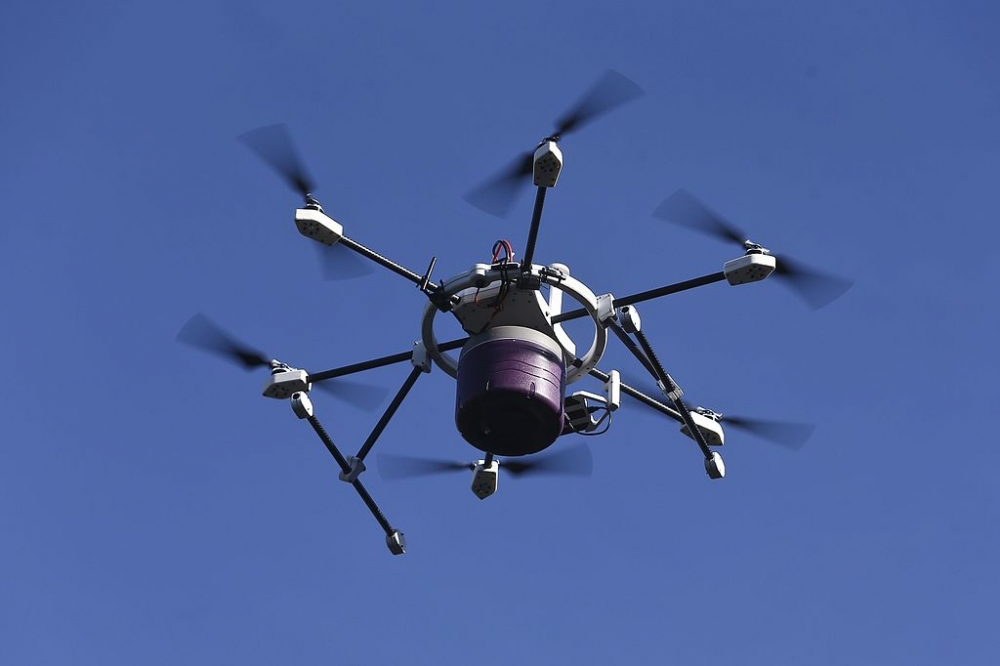The number of close encounters between drones and aircraft in Australia is forecast to jump by 75 per cent this year as the number of the remotely piloted aircraft doubles.
A new report by the Australian Transport Safety Bureau on the safety of remotely piloted aircraft systems (RPAS) — the official name for drones — warned it was not possible to accurately assess how many were operating in Australia.
But forecasts based on the number of registered operators as well as Google trends shopping data suggested the number would double by the end of this year.
The report found there had been 180 safety incidents involving drones between 2012 and 2016, including crashes. High capacity air transport accounted for 45 per cent of the reports with charter operators accounting for a further 5 per cent.
Of these, there were 108 instances of “near encounters’ between drones and aircraft — where a drone forced an aircraft to manoeuvre to maintain a safe distance or was seen near an aircraft which would have done so if there had been more opportunity.
More than 60 per cent of these incidents occurred in 2016 and the report said statistical models forecast a 75 percent increase this year.
“Almost half of all reported near encounters involved high capacity air transport aircraft,’’ it said. “Taking into account hours flown, helicopters were over-represented in RPAS near encounters.
“Most occurrences happened in the main capital cities, with Sydney accounting for 37 per cent of all near encounters. ‘’
One of the surprising findings was that most of the near encounter incidents took place above 1000ft, with about half occurring between 1000ft and 5000ft.
Because the drones remained unidentified, the ATSB was unable to say whether they were certified, model aircraft or toys but it did not believe they were being used commercially.
Most of the operators were also likely to be either unaware or unconcerned about breaking rules requiring that drones remain in a visual line of sight at a height of less than 400ft, more than 5km away from aerodrome boundaries and away from populated areas.
Also unclear were the consequences of a collision between an aircraft and a drone.
There have been no reported collisions in Australia and of the five known collisions globally, three resulted in no damage beyond scratches.
But a 2010 collision with a sports biplane in the US resulted in a crushed wing and 1997 incident with a German motor glider killed two people.
The report said the lack of information meant bird strike data had been used to predict what might happen in a drone strike.
The ATSB analysis showed that 7.7 per cent of birdstrikes on high capacity used by airlines resulted in engine ingestions, about a fifth of which led to engine damage. The wings were the next area most likely to be damaged.
For smaller air transport aircraft, wings are most likely to be damaged, and to a much lesser extent, engines and propellers.
“As remotely piloted aircraft are rigid and generally heavier than most birds, the overall proportion of collisions resulting in aircraft damage is expected to be higher than for birdstrikes, and the distribution of damage across an airframe will probably also differ,’’ the report said.
The ATSB suggested RPAS components could conceivably penetrate the wing or fuselage of an airliner, although they believed the probability of this happening was low.
“Engine ingestion in high capacity air transport aircraft (mostly with large turbofan engines) can be expected for about eight per cent of RPAS collisions based on birdstrike data,’’ it said.
“The proportion of RPAS ingestions expected to cause engine damage and engine shutdown will be higher than for bird ingestion. However, loss of a single engine should have minimal consequence to the safety of the aircraft.’’
The risk of damage to general aviation aircraft was higher, with windscreens, flight surfaces and engines potential problem areas.
























